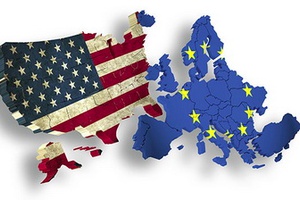 Investing in US stocks versus European stocks involves considering various factors, including economic conditions, market performance, regulatory environments, currency risk, and sector exposure. Here’s a comparison highlighting some key aspects of investing in each market:
Investing in US stocks versus European stocks involves considering various factors, including economic conditions, market performance, regulatory environments, currency risk, and sector exposure. Here’s a comparison highlighting some key aspects of investing in each market:
- Market Size and Diversity:
- US Stock Market: The US stock market is the largest and most diverse in the world, comprising thousands of publicly traded companies across various sectors, including technology, healthcare, finance, consumer goods, and energy.
- European Stock Market: The European stock market is diverse but generally smaller compared to the US market. It includes stock exchanges in countries such as the UK, Germany, France, Switzerland, and others. European stocks represent a mix of industries, including finance, automotive, manufacturing, healthcare, and consumer goods.
- Economic Conditions:
- US Economy: The US economy is one of the largest and most influential globally, with robust economic indicators and policies that often impact global markets.
- European Economy: The European economy is significant but fragmented, consisting of multiple countries with varying economic conditions, regulatory frameworks, and fiscal policies. Economic performance in Europe can be influenced by factors such as Brexit, Eurozone stability, and geopolitical tensions.
- Currency Risk:
- US Stocks: Investing in US stocks exposes investors to currency risk if they hold assets denominated in US dollars. Fluctuations in exchange rates between the US dollar and their home currency can impact returns for international investors.
- European Stocks: Similarly, investing in European stocks exposes investors to currency risk if they hold assets denominated in euros or other local currencies. Currency fluctuations, especially concerning Eurozone stability and Brexit-related developments, can affect returns for international investors.
- Regulatory Environment:
- US Stock Market: The US stock market is regulated by the Securities and Exchange Commission (SEC), which imposes rules and regulations to protect investors and maintain market integrity.
- European Stock Market: The European stock market is regulated by various national authorities and supranational bodies such as the European Securities and Markets Authority (ESMA), which oversee financial markets and ensure compliance with regulations across the European Union.
- Sector Exposure:
- US Stocks: The US market offers exposure to a wide range of sectors, including technology, healthcare, finance, consumer discretionary, and industrials. It is known for its innovation-driven technology companies, such as FAANG stocks (Facebook, Apple, Amazon, Netflix, Google).
- European Stocks: European stocks encompass various sectors, including finance (e.g., banking and insurance), automotive, manufacturing, healthcare, consumer goods, and energy. European companies may have a different sectoral composition compared to their US counterparts, with strengths in industries like luxury goods, automotive manufacturing, and pharmaceuticals.
- Volatility and Risk:
- US Stocks: Historically, US stocks have experienced periods of volatility but have shown resilience over the long term, delivering solid returns for investors. The US market is known for its dynamic and innovative companies, which can lead to both opportunities and risks.
- European Stocks: European stocks can also be volatile, influenced by factors such as economic uncertainties, political developments, regulatory changes, and global market conditions. Brexit-related uncertainties, Eurozone stability concerns, and geopolitical tensions can impact European stock performance.
Ultimately, the choice between investing in US or European stocks depends on factors such as investment objectives, risk tolerance, portfolio diversification, and market outlook. Many investors choose to diversify their portfolios by investing in both US and European stocks to mitigate specific risks associated with each market and capitalize on opportunities in different regions.
